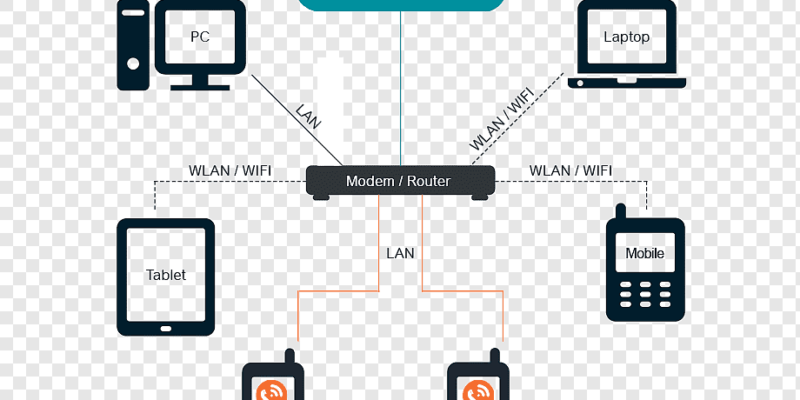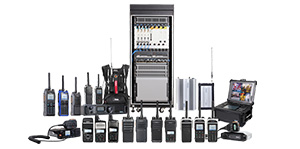Communication is the backbone of every business, and efficient, reliable methods are crucial for success. In today’s fast-paced world, having a seamless communication solution that works regardless of location is paramount. Push to Talk Over Cellular (POC) is one such innovative solution that is transforming how teams and organizations communicate, offering a mix of speed, accessibility, and flexibility.
In this blog, we will explore the role of POC in modern communication and how it integrates with other key technologies such as Digital Mobile Radio (DMR), Terrestrial Trunked Radio (TETRA), and wireless solutions.
What is Push to Talk Over Cellular (POC)?
Push to Talk Over Cellular (POC) is a communication technology that allows users to instantly transmit voice messages over a cellular network by pressing a button. This system, often referred to as “walkie-talkie over the mobile network,” enables real-time communication between users regardless of their geographical locations. It is an effective solution for teams who require instantaneous communication but may be spread out across wide areas, such as field workers, emergency responders, or logistics companies.
Unlike traditional two-way radios, POC leverages the cellular network to offer a broader range, enabling communication over 4G or 5G networks. POC’s simplicity and efficiency make it an essential communication tool in various industries.
The Role of POC in Modern Communication
POC offers several advantages, which are why it is becoming an integral part of modern communication strategies. Here are a few key ways in which POC is enhancing communication:
1. Real-Time Communication for Mobile Teams
One of the major benefits of POC is the ability to provide immediate communication across a wide range of mobile devices. Whether it’s coordinating with drivers, field technicians, or emergency teams, POC ensures that voice communication can happen instantly at the push of a button.
2. Integration with Wireless Solutions and IoT
In today’s connected world, the Internet of Things (IoT) is rapidly growing. POC is closely tied to wireless solutions and IoT devices, making it easier for users to interact with other systems. For example, a POC device in a building management system (BMS) can be integrated with environmental sensors and alarms to provide instant alerts to a team, ensuring a swift response.
3. Cost-Efficiency
POC eliminates the need for dedicated radio infrastructure and is usually more affordable than traditional two-way radio solutions. This is especially beneficial for businesses looking to reduce overhead costs while maintaining reliable communication. Furthermore, POC systems use existing cellular networks, making them highly scalable.
4. Flexibility and Scalability
POC solutions are highly scalable, making them ideal for businesses of all sizes. Whether you’re managing a small team or overseeing a large fleet of vehicles, POC can be tailored to meet your needs. The flexibility of these systems ensures they can grow with your business and adapt to changing communication requirements.
5. Enhanced Coverage and Global Reach
Unlike traditional radios that rely on limited coverage, POC utilizes cellular networks to provide global communication capabilities. POC devices can seamlessly operate wherever there is cellular coverage, even in remote areas, which is a significant advantage for organizations with employees located across various regions or countries.
Key Technologies Enhancing POC Communication
To fully understand the impact of POC, it’s essential to look at the technologies that make it possible. Let’s dive into some of these key technologies and their connection to POC:
1. Digital Mobile Radio (DMR)
DMR is a two-way radio standard that provides efficient, secure communication for businesses. When combined with POC, DMR can offer enhanced audio quality, improved network efficiency, and a secure channel for communication. Many POC solutions integrate DMR to offer a hybrid approach to communications, particularly in industries like public safety and transportation.
2. Terrestrial Trunked Radio (TETRA)
TETRA is another communication standard designed for professional mobile radio systems. It supports high-performance voice and data communication in mission-critical scenarios. TETRA is widely used by emergency services, utilities, and transportation industries. When integrated with POC, it enhances coverage, reliability, and scalability, making it a great solution for large organizations needing both POC and traditional radio communication systems.
3. Wireless Solutions
POC works seamlessly with wireless solutions, whether it’s a network of IP cameras (CCTV), access control systems, or other wireless communication devices. The combination of wireless and cellular technology allows real-time communication and data sharing, improving operational efficiency in industries like security, logistics, and healthcare.
4. VSAT (Very Small Aperture Terminal)
For organizations that operate in remote areas where cellular networks are unavailable, VSAT technology enables satellite-based communication. By integrating VSAT with POC, teams can maintain seamless communication even in the most isolated locations, ensuring that they remain connected at all times.
5. IPTV and MATV Systems
POC can also integrate with IPTV (Internet Protocol Television) and MATV (Master Antenna Television) systems to provide live communication alongside media content. This integration is especially beneficial in sectors like hospitality and corporate environments, where centralized communication and entertainment systems are essential.
Applications of POC in Various Industries
1. Public Safety
For emergency responders, real-time communication can be the difference between life and death. POC technology is widely used by police, firefighters, and paramedics to coordinate efforts in critical situations. By leveraging cellular networks and integrating with DMR and TETRA systems, responders can have secure, instant communication in even the most chaotic environments.
2. Construction and Manufacturing
Construction sites and manufacturing plants are often large and spread out. With POC, workers can stay in constant contact, making it easier to manage tasks, report hazards, or address safety issues. POC allows instant communication, which is crucial for maintaining operational efficiency and worker safety.
3. Logistics and Fleet Management
Fleet management relies heavily on communication between drivers, dispatchers, and other stakeholders. POC provides a reliable communication solution for logistics companies, allowing them to track shipments, coordinate deliveries, and provide timely updates to clients. Additionally, POC devices can be integrated with parking management systems and fire alarm systems to enhance the safety and efficiency of operations.
4. Healthcare
In the healthcare sector, effective communication is essential for patient care. Nurse call systems, access control systems, and fire alarm systems must be integrated into an efficient communication system. POC enhances this by allowing healthcare workers to communicate instantly with each other, ensuring that emergencies are handled swiftly and efficiently.
5. Hospitality
POC is increasingly being used in hospitality industries to enhance guest experiences and streamline operations. With POC, hotel staff can quickly respond to guest requests, coordinate housekeeping efforts, and ensure that all guest services run smoothly. Integration with audio visual systems and IPTV provides an added layer of convenience for both staff and guests.
Future of POC in Modern Communication
As technology evolves, the role of POC in communication will only grow more prominent. With advancements in 5G, IoT, and AI, POC systems will become even more powerful, offering even faster and more efficient communication options. For industries like construction, logistics, healthcare, and public safety, this technology will continue to be a game-changer.
Conclusion
Push to Talk Over Cellular (POC) is a revolutionary communication solution that blends the reliability of two-way radios with the flexibility of cellular networks. As industries increasingly demand real-time, secure, and scalable communication systems, POC stands out as a versatile tool capable of transforming operations. By integrating POC with technologies like DMR, TETRA, and IoT, businesses can ensure that they stay ahead in an increasingly connected world.
Whether it’s for improving communication efficiency, enhancing safety protocols, or integrating with other advanced systems, POC is playing a crucial role in modern communication. As we look towards the future, POC will undoubtedly continue to evolve and contribute to more efficient and connected industries worldwide.



 Our comprehensive DMR portfolio provides the right solutions and radios for every use case. From the simple license-free digital radio to feature-rich digital trunked radio solutions for professional users.
Our comprehensive DMR portfolio provides the right solutions and radios for every use case. From the simple license-free digital radio to feature-rich digital trunked radio solutions for professional users.